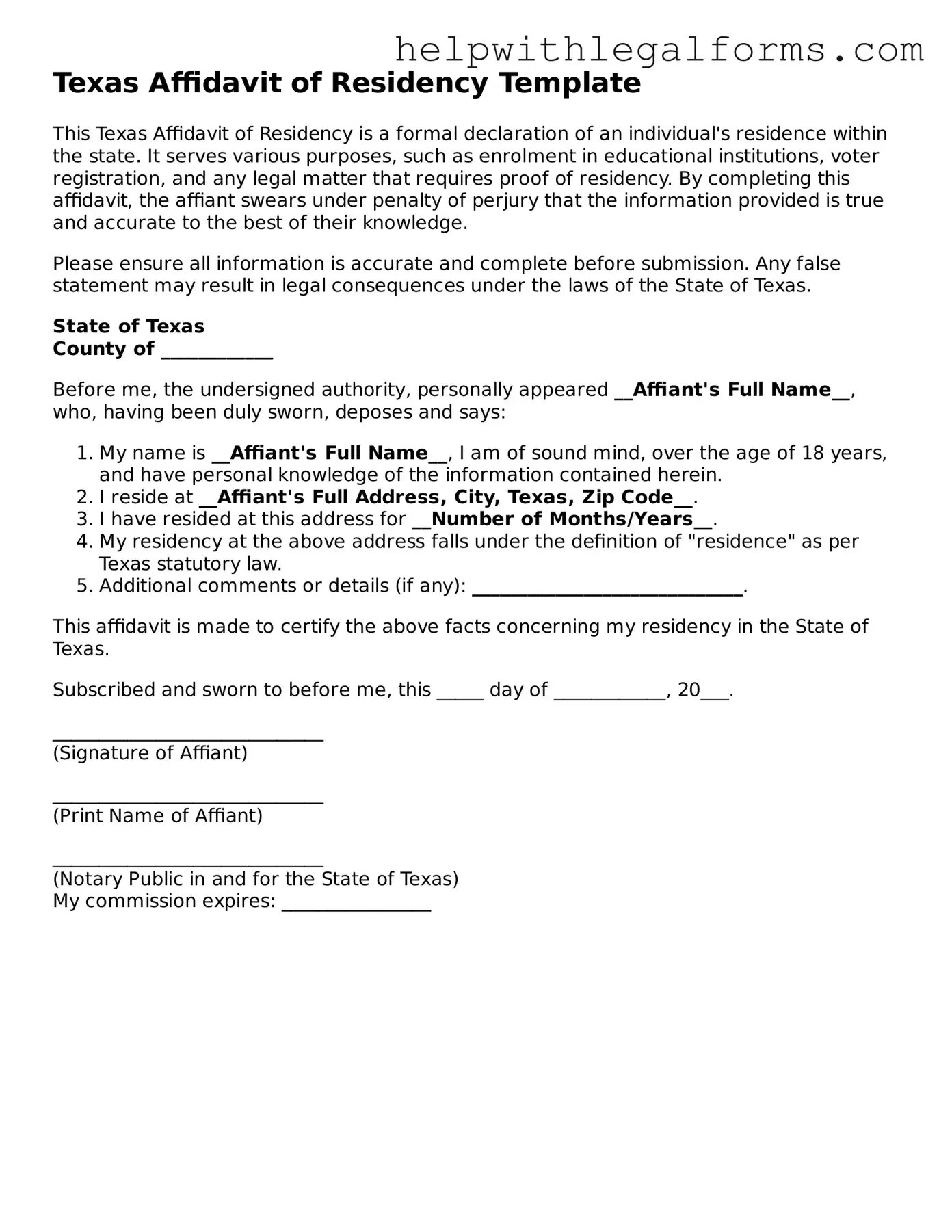Texas Affidavit of Residency Template
This Texas Affidavit of Residency is a formal declaration of an individual's residence within the state. It serves various purposes, such as enrolment in educational institutions, voter registration, and any legal matter that requires proof of residency. By completing this affidavit, the affiant swears under penalty of perjury that the information provided is true and accurate to the best of their knowledge.
Please ensure all information is accurate and complete before submission. Any false statement may result in legal consequences under the laws of the State of Texas.
State of Texas
County of ____________
Before me, the undersigned authority, personally appeared __Affiant's Full Name__, who, having been duly sworn, deposes and says:
- My name is __Affiant's Full Name__, I am of sound mind, over the age of 18 years, and have personal knowledge of the information contained herein.
- I reside at __Affiant's Full Address, City, Texas, Zip Code__.
- I have resided at this address for __Number of Months/Years__.
- My residency at the above address falls under the definition of "residence" as per Texas statutory law.
- Additional comments or details (if any): _____________________________.
This affidavit is made to certify the above facts concerning my residency in the State of Texas.
Subscribed and sworn to before me, this _____ day of ____________, 20___.
_____________________________
(Signature of Affiant)
_____________________________
(Print Name of Affiant)
_____________________________
(Notary Public in and for the State of Texas)
My commission expires: ________________
